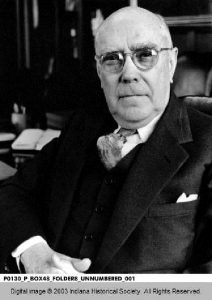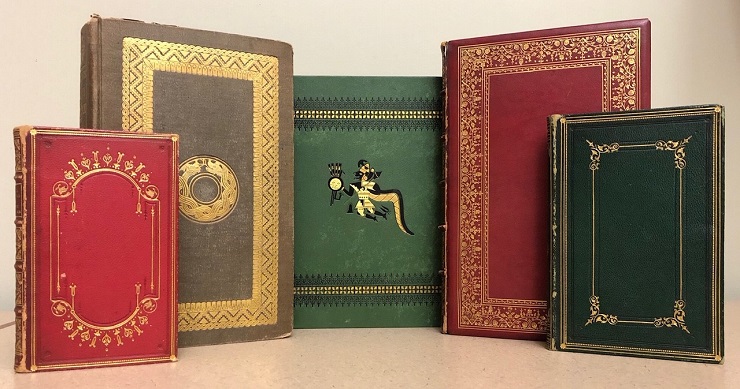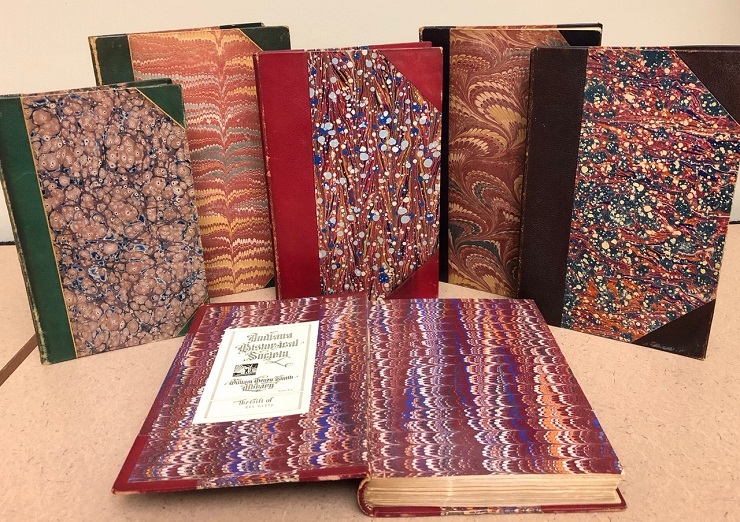
Purchase Tickets
From the Cataloger’s Desk: Ephraim George Squier’s Collection
September 28, 2020

Part of my job as a catalog librarian involves tackling backlogged items. Bringing them out of the shadows and making them accessible to the public is always rewarding. I recently discovered an intriguing accession from 1958: a collection of mid- to late 19th century printed materials that belonged to Ephraim George Squier. Many were authored by him, as well. A quick glance at the accession inventory revealed most of the materials pertained to Central and South America. What, then, was the Indiana connection? Why had they ended up at the IHS library? After examining paperwork in the accession file and looking at a few bookplates, the answer became crystal clear: the collection was a gift from Eli Lilly (1885-1977).
Ephraim George Squier (1821-1888), a native New Yorker, was a man of many talents and accomplishments. He is, perhaps, best known for his work as an archaeologist, diplomat, and journalist. In the 1840s, he collaborated with Dr. Edwin H. Davis on the first major study of the prehistoric Mound Builders of North America. Their efforts resulted in a landmark publication: Ancient Monuments of the Mississippi Valley (1848). This was the first publication of the Smithsonian Institution and first volume of their Contributions to Knowledge series.
Squier was appointed to various diplomatic posts during his life: special chargé d’affaires to Central America, U.S. commissioner to Peru, and consul-general of Honduras at New York. He also served as secretary of the Honduras Interoceanic Railway Company and was elected as the first president of the Anthropological Institute of New York. His extensive travels afforded him opportunities to study and write about the archaeology, ethnology, and linguistics of prehistoric and early Latin American civilizations.
Squier’s journalism career included stints with various publications: the New York State Mechanic (Albany, NY), the Hartford Daily Journal (Hartford, CT), and the Scioto Gazette (Chillicothe, OH). He also worked for several years as the editor-in-chief of Frank Leslie’s publishing house. Sadly, his wife, Miriam, ended up divorcing him to marry Frank Leslie in 1873. Already in poor health by this point, Squier never fully recovered. After his death, it seems his collection of printed materials passed on to his brother, then nephew. From his nephew, it was purchased by Eli Lilly in 1958.

Eli Lilly. Bass Photo Co Collection, Indiana Historical Society.
Lilly had many interests outside of the family’s pharmaceutical business, including the history and archaeology of Indiana. He was very involved with the IHS, serving as president and member of the Executive Committee and Board of Trustees. He also supported the preservation of the prehistoric Angel Mounds Site in southern Indiana, as well as the construction of the Glenn A. Black Laboratory of Archaeology at Indiana University, Bloomington. It isn’t hard to see, therefore, why he purchased Ephraim George Squier’s collection. Clearly, these two impressive men shared similar passions and interests.
I haven’t cataloged all of the printed materials in this accession; however, significant progress has been made over the past several months. There are so many things that appeal to me about the items I have examined so far. First of all, I am a former Spanish teacher. Not only are most of them related to Central and South America, some were also published in the Spanish language. Secondly, many of the books include remarkable illustrations and maps, as well as newspaper clippings and other odds and ends that were laid or pasted in over time. Ephraim George Squier’s signature appears frequently on various endpapers, flyleaves, and title pages. In some cases, there are inscriptions and annotations, as well. These clues help to establish and/or affirm provenance. Finally, almost everything has been exquisitely bound or rebound in beautiful leather bindings with gold tooling and gilt edges, or half bound in marbled boards with colorful, whimsical, and eye-catching patterns.

Squier books with leather bindings & gold tooling, Indiana Historical Society.

Squier books with marbled boards & endpapers, Indiana Historical Society.
It has been an absolute honor and joy to work with such an amazing and significant collection of printed items. It has also been fascinating to learn about Ephraim George Squier and his many achievements. As for Mr. Lilly, all I can say is thank you. Thank you for your generous gift to the IHS, and thank you for allowing me to indulge in so much rare book cataloging fun!
Available titles from this accession can be found here.
Sources:
“E. G. Squier.” Encyclopædia Britannica, June 13, 2020, https://www.britannica.com/biography/E-G-Squier. Accessed 5 September, 2020.
“Ephraim George Squier.” The British Museum, https://www.britishmuseum.org/collection/term/BIOG128440. Accessed 5 September, 2020.
“Ephraim George Squier.” The Smithsonian Institution Archives, https://siarchives.si.edu/history/featured-topics/latin-american-research/ephraim-george-squier. Accessed 5 September, 2020.
“Lilly, Eli.” Encyclopedia of Indianapolis, Indiana University Press, 1994, p. 910-911.
Also: information found in the accession file.
Portrait of Ephraim George Squier (top), courtesy of Smithsonian Institution Archives. Image # SIA_000095_B27E_124.









